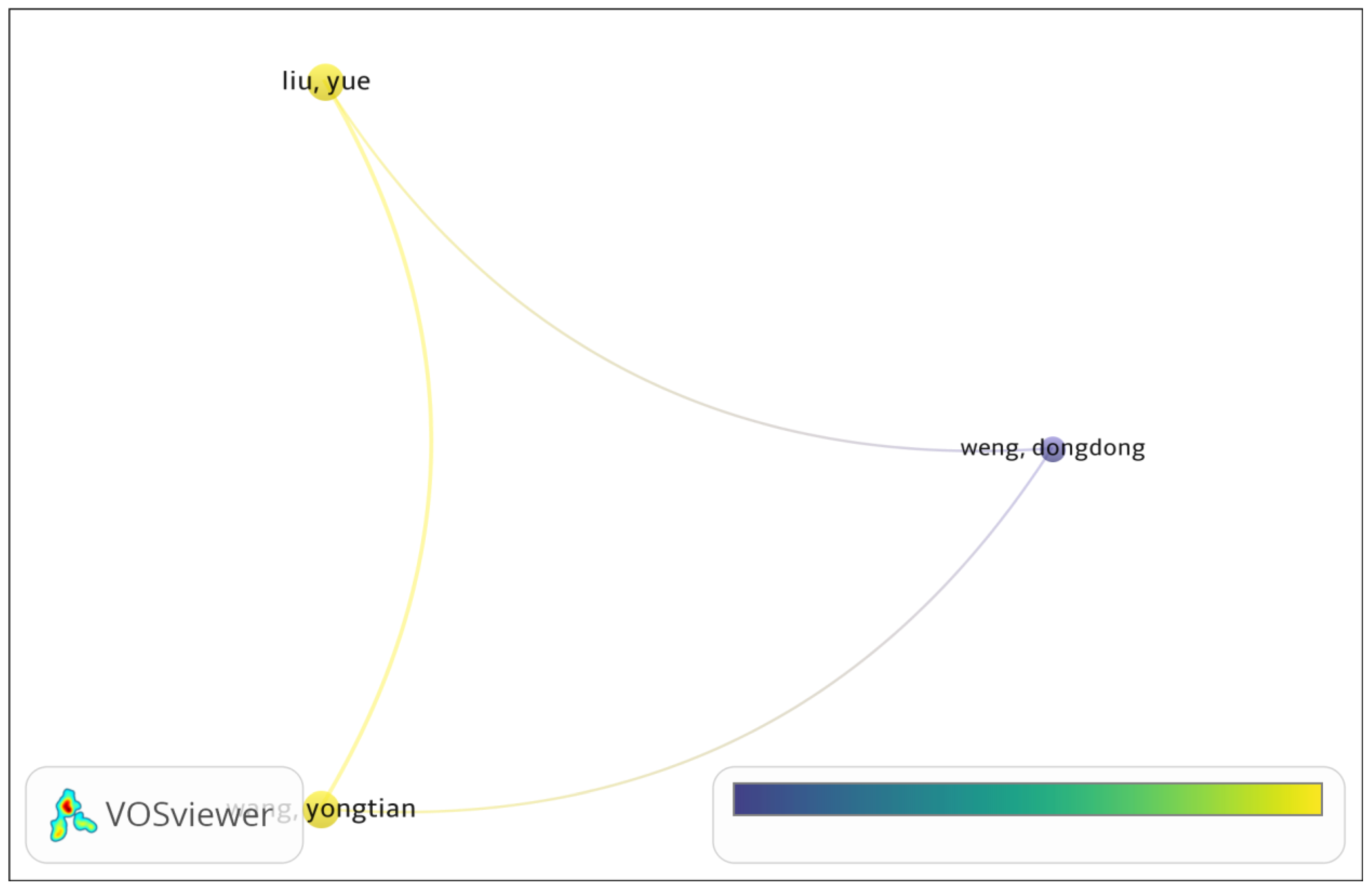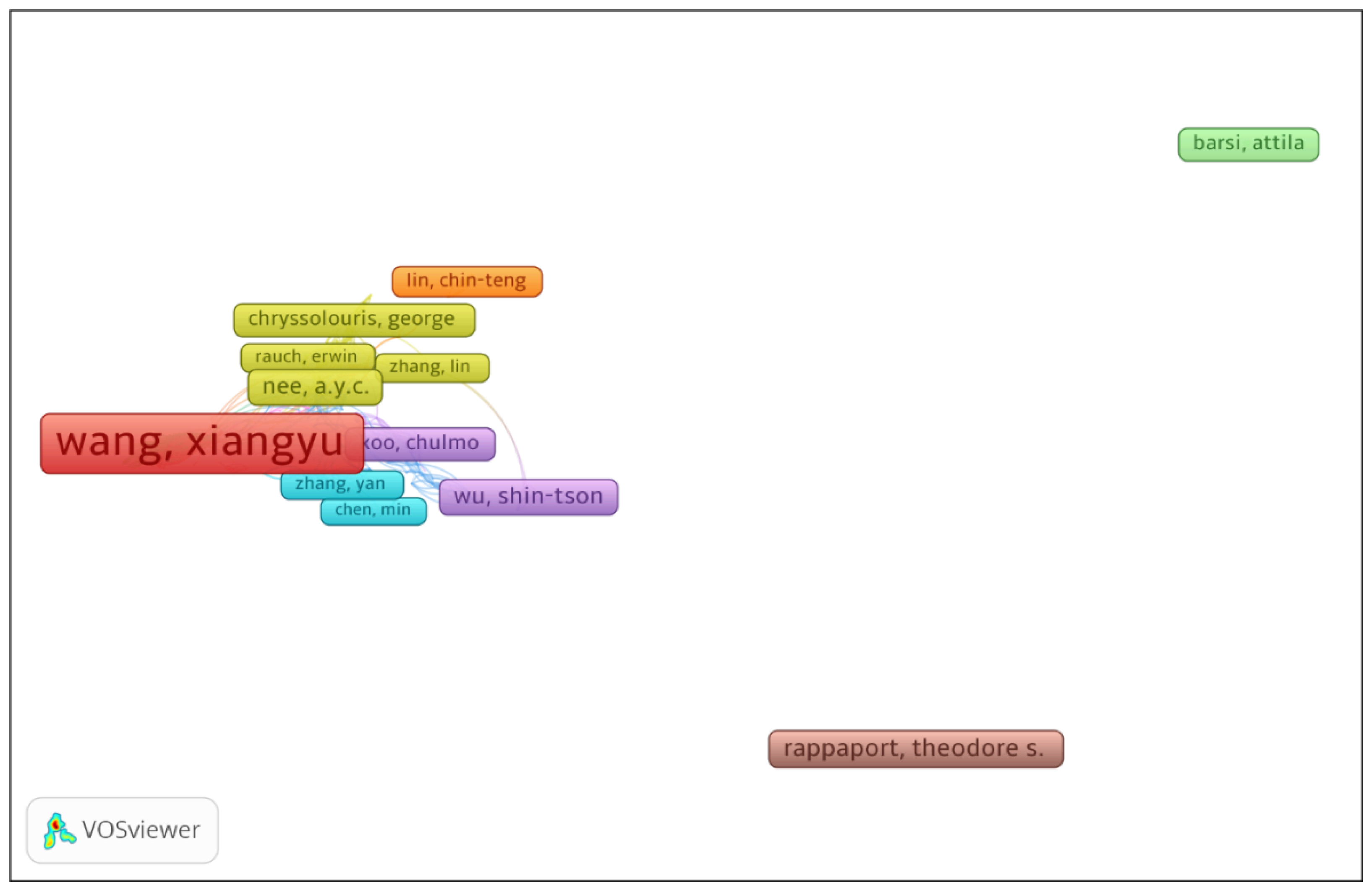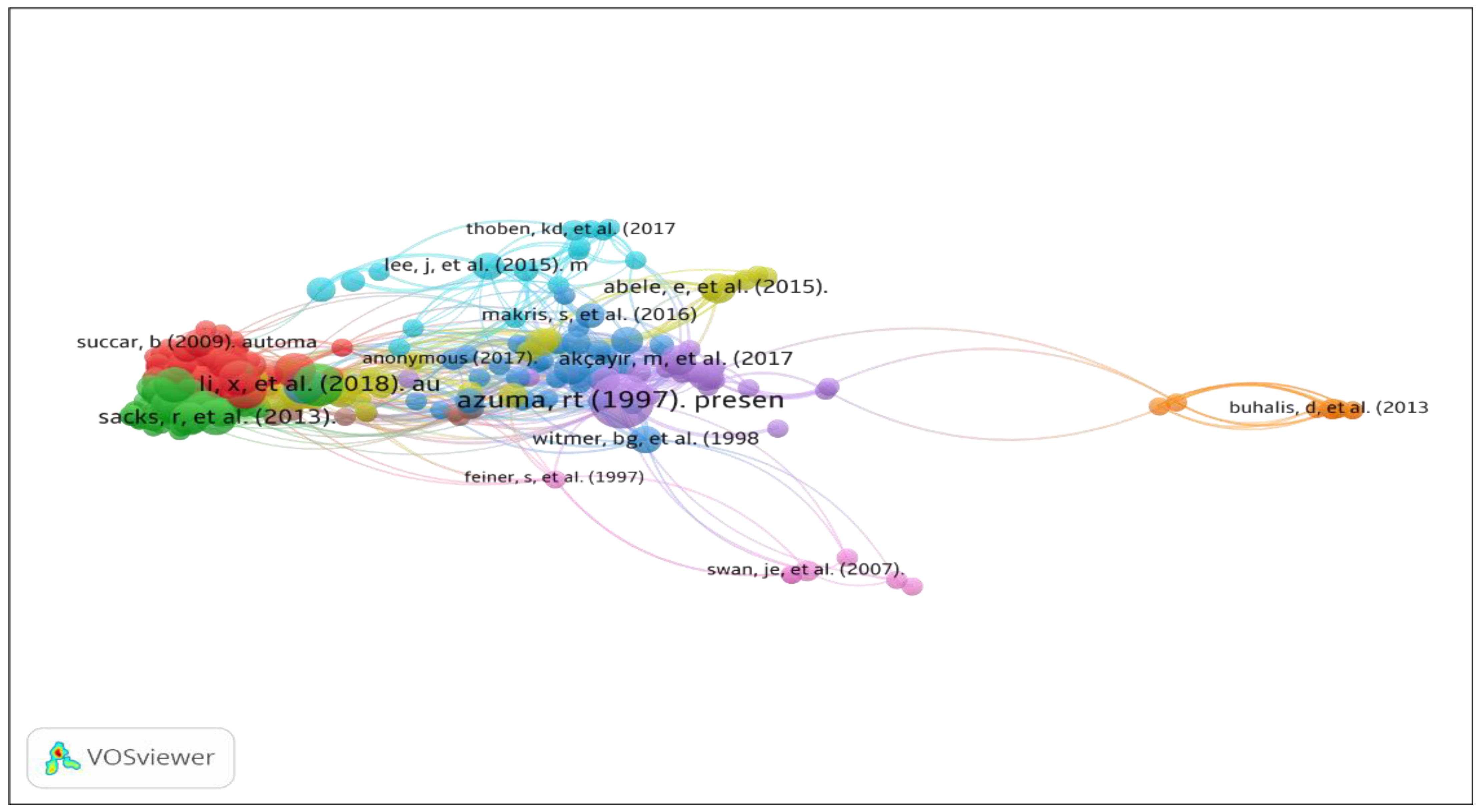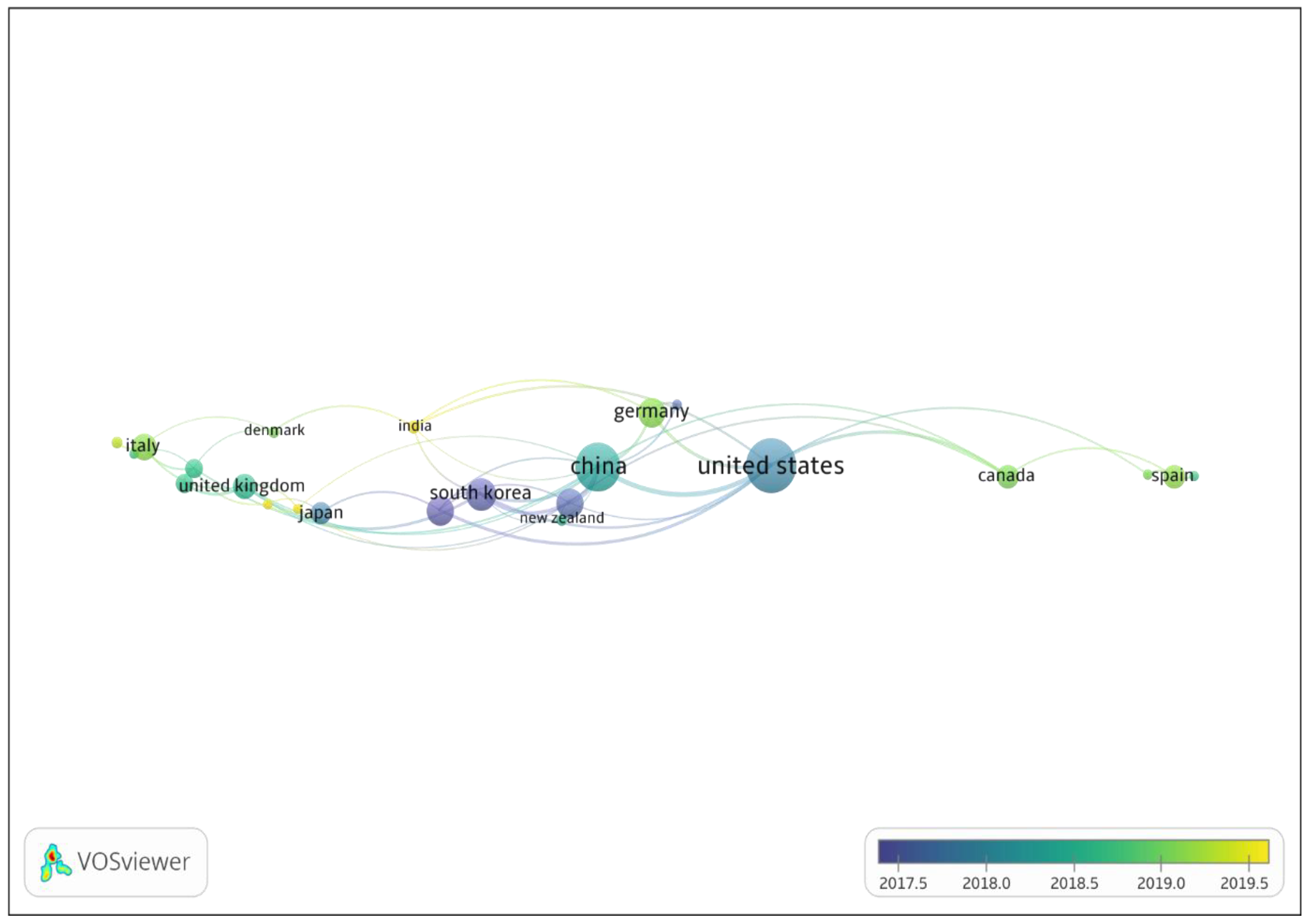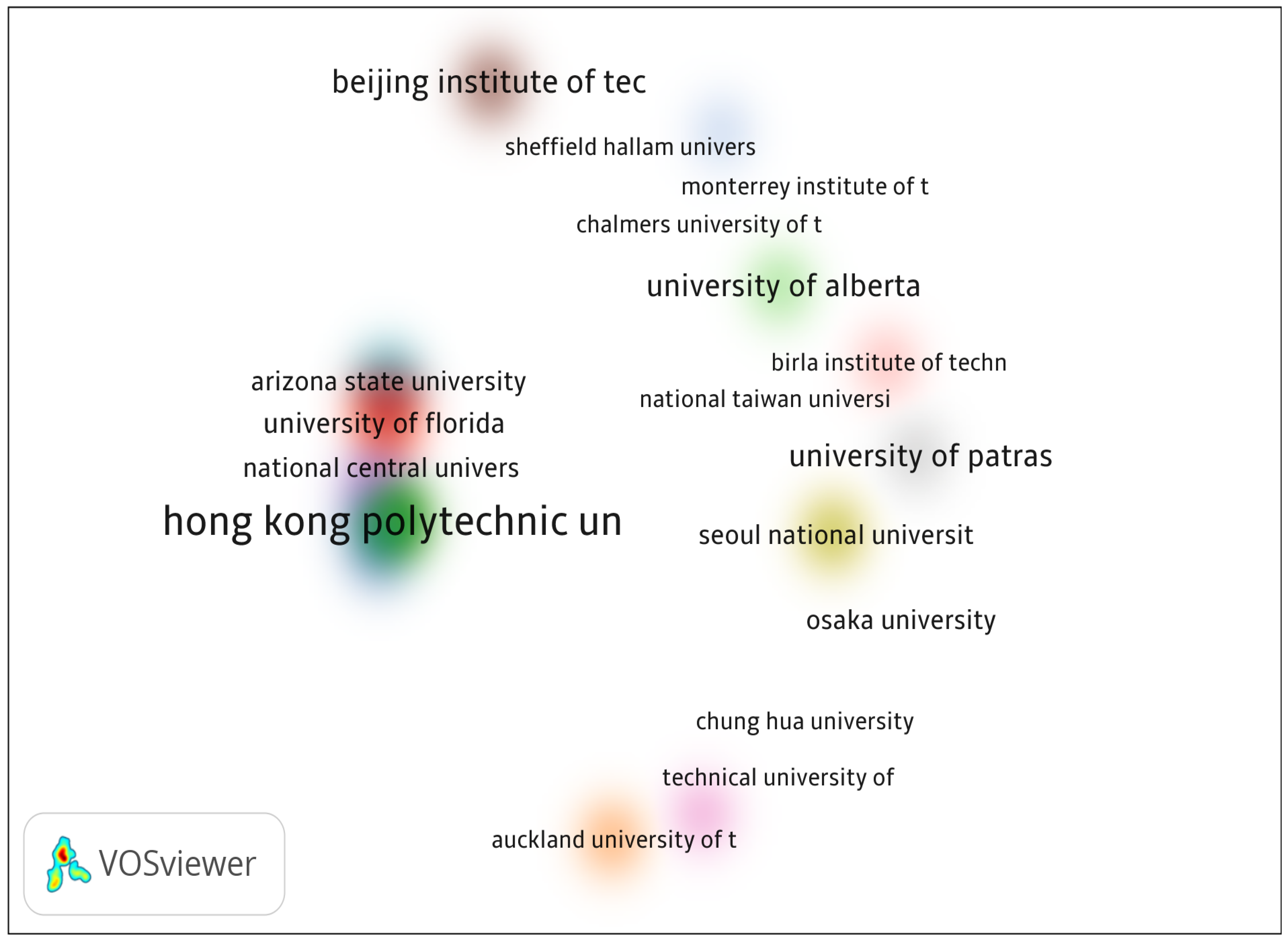1. INTRODUCTION
Project Productivity, improved quality of work, and reduction in project delivery time are efforts that can improve the poor performance of the construction industry but not without the input of communication-enhancing technologies such as Virtual reality and augmented reality. The design, construction and operation process in Construction is firmly driven by stakeholders’ shared information-driven process throughout the life-cycle of a project (Hamzeh, Abou-Ibrahim, Daou,Faloughi, & Kawwa, 2019; Oladiran & Onatayo, 2019). Integrated collaborative design teams can facilitate project integration and interchange using the potential benefits offered by the use of emerging technologies in the construction industry such as the use of virtual reality and augmented reality (Goulding, Rahimian & Wang, 2014; Onososen et al., 2023). Project failure and recurring building collapse in the Nigerian construction industry has been linked to a gap in communication and information processing amongst professionals in the Nigerian AEC sector (Goulding et al 2014; Egan, 1998; Oladiran et al., 2019). Processes and tools must thereby be applied in eradicating the effect of adversarial relations on project failure. Though, communication and information processing within the industry has increased dramatically with the advent of disruptive innovations, however, recent technologies could further enhance the workflow process in an effort to maximize effort and minimise project failure.
2.0. LITERATURE REVIEW
Hamzeh et al (2019) examined the use of holographic visualization in the inception and execution of a project with a focus on its comparison with other physical and digital modelling methods.
2.1. Augmented Reality (AR)
Augmented reality (AR) is a technology that involves the overlaying of computer-generated sensory information onto the real world in real-time (Hamzeh et al, 2019). Unlike Virtual reality (VR), AR doesn't completely immerse the user into an entirely synthetic environment, but rather provides an enhanced view of the real world with superimposed data and objects (Hamzeh et al, 2019). In the Architecture, Engineering, and Construction (AEC) industry, AR has demonstrated numerous potential uses, including 3D visualization of buildings on site, locating installed components within a building, and supervising the construction process to ensure compliance with design models (Meža, Turk, & Dolenc, 2015; Hamzeh et al, 2019, Adetayo & Onatayo, 2023).
In Nigeria's construction industry, 2D representation technologies are still widely used, although 3D visualization tools are gradually gaining popularity (Hamzeh et al, 2019). The use of AR in the construction industry is rapidly evolving, with increasing evidence showing that it could play a vital role in transforming the industry's operational processes. By enhancing the real world view with computer-generated information, AR offers a more comprehensive view of the construction process, enabling stakeholders to better understand the design, identify potential issues, and address them before they escalate into bigger problems.
2.2. Virtual Reality (VR)
Immersive Virtual reality is a mental appealing visualization that allows the brain to record experiences as if it is occurring physically (Lucas, 2018).
2.3. Emerging VR and AR tools in the Nigerian AEC industry
Microsoft Hololens: Microsoft Hololens is a handy, wearable self-contained VR device that utilizes projections generated by the computer in a simulacrum of BIM models over the real world. On-site, the tool helps keep the design team and the construction site on the same page, and off-site, it's crucial for presenting a visual model to clients.
2.4. Holograms
While Microsoft hololens need the use of a wearable device, holograms don’t require extra wear or an external device and can be seen by several participants. Hologram is different from 3D presentations in the form that the modeling of 3D images appears to pop out of 2D planes Hamzeh et al, 2019).
2.5. Cave Systems
Cave systems though extant have been limited by interoperability issues hindering their adaptation in the construction industry. However, it allows the user to walk through a full-scale digital BIM model (Hamzeh et al, 2019). It had the advantage of engaging a whole team of about 15 people or more thereby ensuring effective collaborative planning and communication exchange.
While AR and VR technologies require the use of special equipment, Holography is more advantageous as it allows users to view presentations with the naked eye. Holography, on the other hand, is restricted in this respect since it does not enable users to interact with the accompanying 3D visualization. Augmented reality and virtual reality allow users to interact with 3D presentations with numerous functionalities, such as editing and modification (Hamzeh et al, 2019).
3.1. Scientometric Analysis
Scientometric analysis has been adopted severally in the AEC education sector in conducting analysis of extant literature. Wuni, GQ, Shen, and Osei-Kyei (2019) have used it in analyzing the intellectual evolution of green building discourse. Olawumi and Chan (2018) have also adopted in discussing literature published on sustainability. Saka and Chan (2019) also adopted it in discussing BIM trends in the AEC sector. It has been observed to be more effective than the manual review method or the bibliometric method (Wuni et al, 2019; Saka & Chan, 2019). These limitations arise from the inability of these other methods to review the literature with regards to a network of researchers, regions, and articles citation index and keywords analysis. Scientometric analysis have been proven to be encompassing and suited for review in the AEC education sector (Olawumi & Chan, 2018). This paper, therefore, utilizes the scientometric analysis method in a review of extant literature to establish, the researcher’s collaborations across the globe, document co-citations of Authors, keyword co-occurrences of diverse documents, and distribution of documents by country. This is essential in measuring the influence of journal articles in VR and AR research in the AEC sector, highlighting the most active states in VR and AR research contribution and establishing the spread in the impact of research keywords and co-occurrence networks. As opined by Hosseini, Martek, Zavadskkas, Aibinu, Arashpour, and Chileshe (2018), among the types of scientific mapping, by systematically mapping the literature in a given field using bibliometric data, tools, and approaches, scientometric analysis yields more accurate results.
VOSviewer was used for executing the scientometric analysis as it is an open-source software tool with effective features for visualizing bibliometric networks (Wuni et al, 2019, Saka and Chan, 2019). There are several databases with the most used ones being; Google Scholar, ISI Web of Science, Scopus, and Dimensions (Olawumi, et al, 2017). The search query was conducted on the Dimensions digital database which holds large volumes of publications in diverse fields and areas of interest. In locating studies, Denyer and Tranfield, (2009); Abdirad & Dossick, (2016) proposed the use of search strings in finding peer-reviewed bibliographic sources To employ the full range of data accessible, familiar keywords in the research area was used in querying the review of articles which appeared as; “Virtual Reality OR Augmented Reality”
The search query was refined to the year 2010 to 2020 to cover a publication period of ten years of research on VR and AR in the AEC sector. A total of 37,666 publications was generated and refined to the field research area of construction management and the built environment. Articles only were selected with the exclusion of conference proceedings and books following the precedent of Wuni et al (2019) and Saka and Chan (2019). The publications were also restricted to literature published in English. A total of 85 research articles met all the criteria and the bibliometric data was exported in a CSV file format to VOSViewer for scientific mapping (Saka, & Chan, 2019; Zhao, 2017; He, Wang, Luo, Shi, Xie, & Meng, 2017; Antwi-Afari, Li, Pärn, Edwards, 2018).
4.0. RESULTS AND DISCUSSION OF FINDINGS
4.1. Co-Authorship Network of VR and AR
The scientometric analysis was conducted by importing the bibliometric data into VOS viewer. The co-authorship network was created through a map based on bibliometric data and fractional counting. This identifies collaboration among researchers in academia, and also, illustrates the exchange of ideas, transfer of knowledge, and exchange of innovations (Wuni et al, 2019). In network visualization, the size and label of an item is determined by the weight of an item, which means an item with more weight would appear with a larger circle. The co-authorship network analysis reveals key collaboration in VR and AR education learning. The minimum number of research articles and citations was set to 3. Of the 962 authors for the 85 documents analyzed, only 10 met the threshold. Three major clusters were identified with scanty collaborators. This reveals the dearth of literature on virtual reality and Augmented Reality. The three clusters identified are led by; Liu, Yue; Weng, Dongdong, and Yongtian. Their collaboration is however inter-institutional and limited within the continent. There is little few collaborative endeavors amongst researchers across the globe on virtual reality and augmented reality in the industry.
Figure 1.
Network Visualization showing Co-Authorship Network.
Figure 1.
Network Visualization showing Co-Authorship Network.
4.2. Co- Occurrence network of keywords
Keywords are imperative in establishing the themes of publications carried out by Authors thereby giving a mental map of the researcher’s area of study in a specific subject area. Minimum keyword occurrence requirement was set at 3, and fractional counting was selected as the counting technique. Of the 813 terms, only 4 met the threshold. The basic keywords identified are; sustainability, Teaching, Experience, and Systematic review.
Figure 2.
Density map of co-occurrence network of keywords.
Figure 2.
Density map of co-occurrence network of keywords.
4.3. Author Co-Citation Network
The author co-citation network analysis reveals the degree of influence of publications from diverse authors in the specific area. This is pivotal in measuring the most impactful publications and research output in academia. With a minimum number of citations of an author set to 5, 12 Authors met the threshold. The authors with the most impact are Wang, Xiangyu, followed by Rappaport, Theodore,S; Nee, A.Y.C amongst others visualized below.
Figure 3.
Network visualization of Document Co-Citation Network.
Figure 3.
Network visualization of Document Co-Citation Network.
4.4. Documents Citation Network Analysis
A publication's significance might be measured by the number of times it is cited by other researchers. The article citation network analysis identifies articles with a high number of citations and ranks them accordingly. O the 8787 cited references of works on green supply chain management, 299 me the threshold. The minimum number of citations of a cited reference was set to 3 and revealed that the most influential publications were Azuma, RT (1997), Li, X et al (2018), Sacks, et al (2013), Buhalis, et al (2013), Akcayu et al (2017) and Makris et al (2016).
Figure 4.
Network Visualization of Documents citation network analysis.
Figure 4.
Network Visualization of Documents citation network analysis.
4.5. Active Countries in VR and AR research
Academic collaboration is essential in furthering innovation and knowledge development in any subject area. Hence, it is imperative to evaluate the contributions of countries to VR and AR research in order to identify areas of strength in collaborative work and research output and identify other lag areas needing an overhaul. It is also useful to facilitate joint research funding programmes (Saka & Chan, 2019).
Figure 5 was made by requiring a minimum of 3 papers and citations per nation. 48 countries were identified with only 27 meeting the threshold for the analysis. The node size of a country represents the magnitude of academic publications from that country while other clusters are identified by differing colors. From the analysis shown below, United States and China have bigger nodes than other countries. This identifies the leading countries in VR and AR research as the United States and China. Other clusters include; South Korea, Germany, and New Zealand. Other countries with prominent publications are; Spain, India, Denmark, United Kingdom, Japan, and Italy. While North America and Asia were moderately represented, there is barely any significant contribution from Africa to VR and AR research. This portends a gap compared to the rest of the world, this also implies there is little development in VR and AR usage and practice in the African AEC sector. While United States and China are the top countries, the other major contributors are; South Korea, New Zealand, United Kingdom, and Germany.
4.6. Active Institutions in VR and AR research
For significant progress to continually be made in VR and AR in construction research and practice, institutions must deliberately focus on developing the knowledge in this emerging technological application. It, therefore, is imperative to identify institutions championing the frontiers of research in VR and AR in construction in order to determine the most suited institutions for collaborative works, academic exchange plans, and transfer of knowledge.
Figure 6 was generated by analysing the bibliometric data with strings set at a minimum number of documents in an organization at 2 and a minimum number of citations in an organization at 2. Of the 60 Organizations, only 17 met the threshold. From the scientific mapping, most active institutions were from the most active countries such as Beijing Institute of Tech, Hong Kong PolyU, University of Alberta, University of Patras, Osaka University, and University of Florida amongst others. While these institutions have funding schemes for research, it is not certain of such financing initiatives are directed toward VR and AR in construction. While these institutions have made significant progress, it compares low in relation to Universities all over the globe offering AEC courses. Increasing AR and VR Education and learning through research by institutions globally is imperative in encouraging and driving it usage in construction practice. Focus on collaborative learning and exchange of ideas between institutions would also foster a simplification and create an atmosphere for more advances in AR and VR usage on construction sites. Also, it is shown that there is a huge gap in VR and AR research between developed and developing countries. This cannot be overlooked as the countless challenges disturbing the construction industry in developing countries can be resolved with emerging technologies such as VR and AR. Therefore, while the government holds immense power in directing the influence of innovation. However, institutions must recognize and accept the demand for new knowledge in AR research which makes it more important in improving VR and AR usage practice across the globe.
5.0. CONCLUSION
This study presented a scientometric review of Virtual Reality and Augmented Reality in the Architecture, Engineering, and Construction sectors through the use of publications on the Dimensions search engine. This study reviewed the intellectual evolution of publications trend over the years and its scientific mapping analyzing the Co-Authorship network, Co-occurrence of keywords, Active countries in virtual reality and augmented reality research.
In the co-authorship Network of Virtual reality and augmented reality research, the strongest collaboration network was identified between Liu, Yue; Weng, Dongdong and Yongtian. Their collaboration is however inter-institutional and limited within the continent. There is little few collaborative endeavours amongst researchers across the globe on virtual reality and augmented reality in the industry. Analysis of the co-occurrence network of keywords identified research on Virtual Reality and Augmented Reality to be centered on Sustainability, Teaching, Experience, and Systematic review.
The most influential authors with prominent research output identified are; Wang, Xiangyu, followed by Rappaport, Theodore,S; and Nee, A.Y.C. The documents citation network analysis revealed assesses the impact of a publication through the number of citations it records. Publications with the most cited references were observed to be Azuma, RT (1997), Li, X et al (2018), Sacks, et al (2013), Buhalis, et al (2013), Akcayu et al (2017) and Makris et al (2016). An analysis of active countries was conducted to highlight publication distribution across countries and regions. United States of America (North America) and China (Asia) had the highest number of publications followed by other countries such as South Korea, Germany, and New Zealand.
Institutions actively studying VR and AR emerging usage in the construction industry were identified to be Beijing Institute of Tech, Hong Kong PolyU, University of Alberta, University of Patras, Osaka University, and University of Florida amongst others. The study observed the emerging nature of research in VR and AR in the AEC sector but with lots of promising prospects for practice. However, the focus must be directed toward increasing research through inter-continental, inter-institutional, and intra-continental authorship collaboration.
While the study appropriated extant literature through scientific mapping, it is limited by its coverage of publications based solely on Dimensions. Also, only Journal articles published in English were analyzed leaving out a range of publications published in other languages. Further studies could consider the financing mechanisms of VR and AR research and review other databases.
References
- Adetayo, O.; Onatayo, D. A Scientometric Review of Bim in Facility Management Research. Preprints 2023, 2023030095. [CrossRef]
- Darko, A. Chan, A .P.C (2016) Critical analysis of green building research trend in construction journals, Habitat Int. 57 (2016) 53–63. [CrossRef]
- Hamzeh, F, Abou-Ibrahim, H, Daou, A., Faloughi, M., & Kawwa, N (2019). 3D visualization Techniques in the AEC industry: the possible uses of holography. Journal of Information Technology in Construction (ITcon), Vol. 24, pg. 239-255. Available online: http://www.itcon.org/2019/13.
- Hosseini, M.R. Martek, I.. Zavadskas, E.K. Aibinu, A .A. Arashpour, M Chileshe, N.(2018) Critical evaluation of off-site construction research: a Sciento- metric analysis, Autom. Constr. 87 (2018) 235–247. [CrossRef]
- Goulding,J.S, Rahimian, F.P, Wang, X (2014). Virtual reality-based cloud BIM platform for integrated AEC projects, Journal of Information Technology in Construction (ITcon), Special Issue BIM Cloud-Based Technology in the AEC Sector: Present Status and Future Trends, Vol. 19, pg. 308-325. Available online: http://www.itcon.org/2014/18.
- Jason Lucas (2018). Immersive VR in the construction classroom to increase student understanding of sequence, assembly, and space of wood frame construction. Journal of Information Technology in Construction (ITcon), Vol. 23, pg. 179-194. Available online: http://www.itcon.org/2018/9.
- Oladiran, O. J., & Onatayo, D. (2019). Labour productivity: Perception of site managers on building projects. LAUTECH Journal of Civil and Environmental Studies, 2(Issue 1). [CrossRef]
- Onososen, A. O., Musonda, I., Onatayo, D., Tjebane, M. M., Saka, A. B., & Fagbenro, R. K. (2023). Impediments to Construction Site Digitalisation Using Unmanned Aerial Vehicles (UAVs). Drones, 7(1), 45. [CrossRef]
- Olawumi, T.O., Chan, D.W.M. (2018) A scientometric review of global research on sustainability and sustainable development, J. Clean. Prod. 183 (2018) 231–250
. [CrossRef]
- Saka, A.B.; Chan, D, W. M( 2019) A Scientometric Review and Metasynthesis of Building Information Modelling (BIM) Research in Africa Buildings 2019, 9, 85. [CrossRef]
- Wuni, I.Y.; Shen, G.Q.P.; Osei-Kyei, R. (2019) Scientometric review of global research trends on Green buildings in construction journals from 1992 to 2018. Energy Build. 2019, 190, 69–85. [CrossRef]
- Zou, H., Li, N., and Cao, L. (2016) Immersive virtual environments for investigating building emergency evacuation behaviors: A feasibility study. 33rd International Symposium on Automation and Robotics in Construction (ISARC 2016), 333-331.
|
Disclaimer/Publisher’s Note: The statements, opinions and data contained in all publications are solely those of the individual author(s) and contributor(s) and not of MDPI and/or the editor(s). MDPI and/or the editor(s) disclaim responsibility for any injury to people or property resulting from any ideas, methods, instructions or products referred to in the content. |
© 2023 by the authors. Licensee MDPI, Basel, Switzerland. This article is an open access article distributed under the terms and conditions of the Creative Commons Attribution (CC BY) license (http://creativecommons.org/licenses/by/4.0/).
